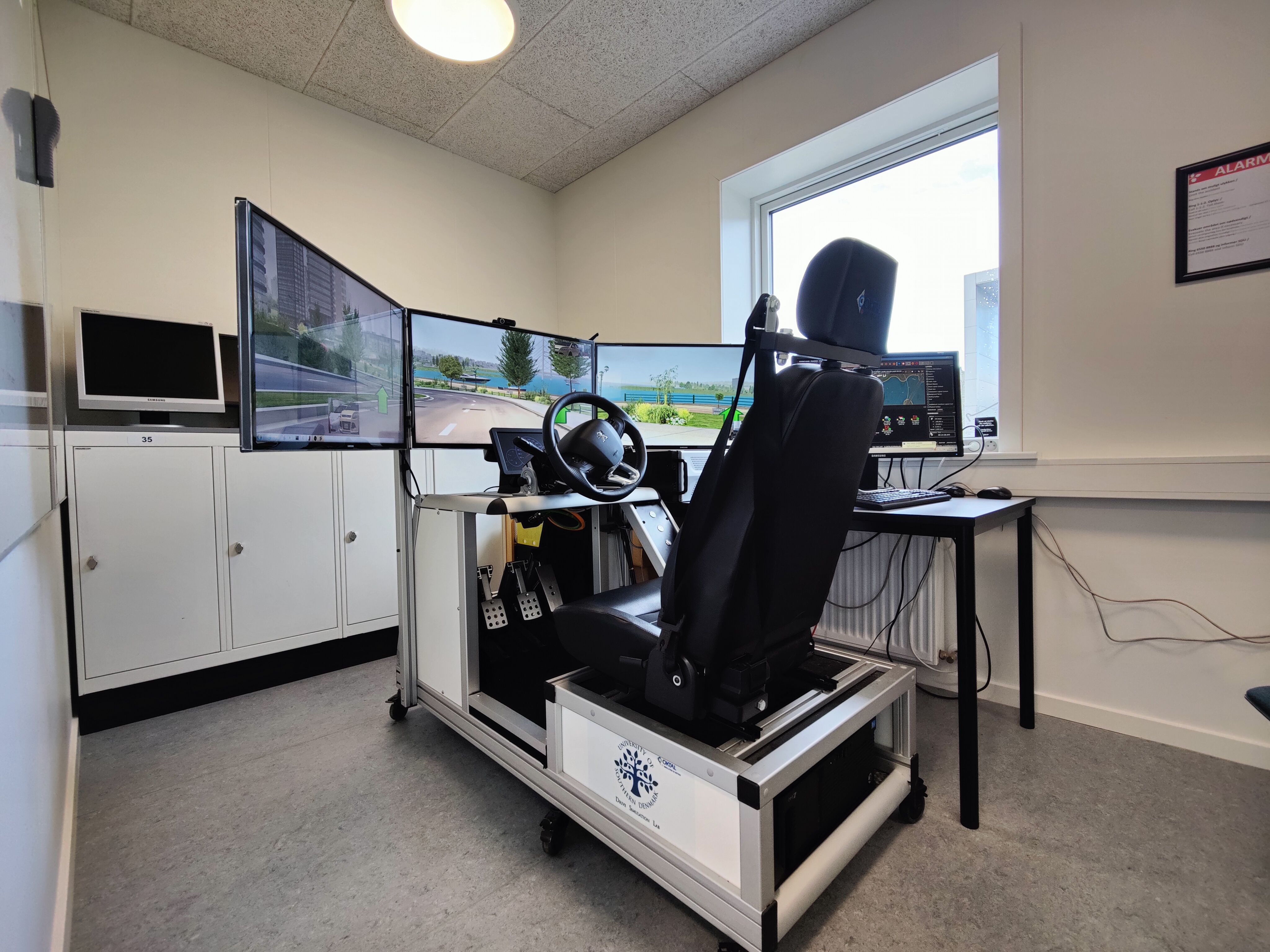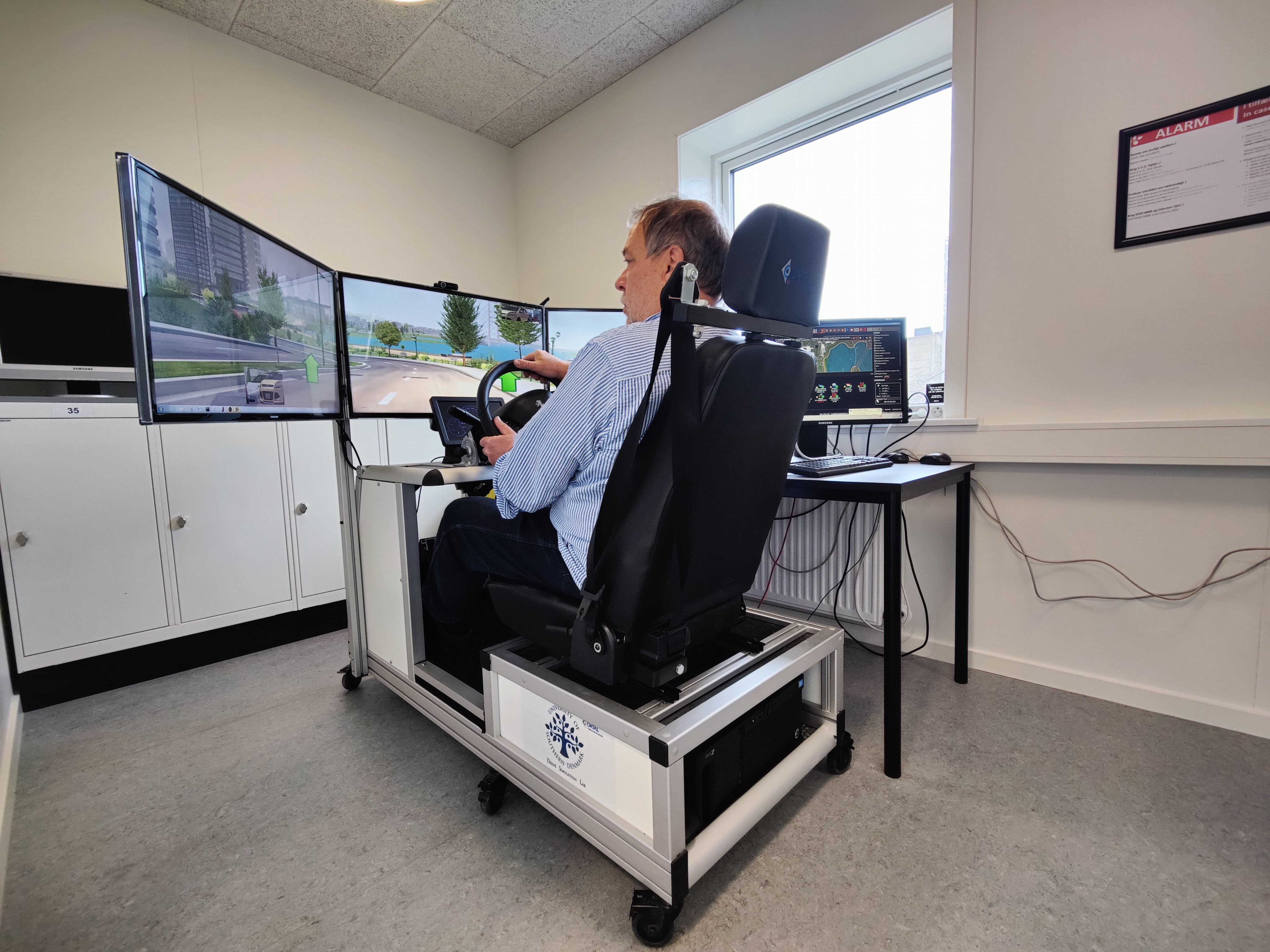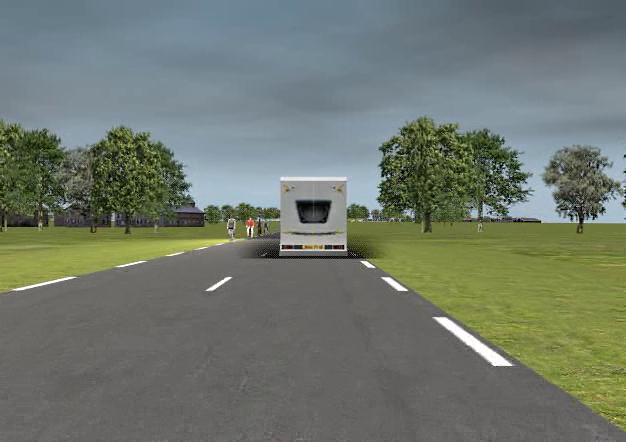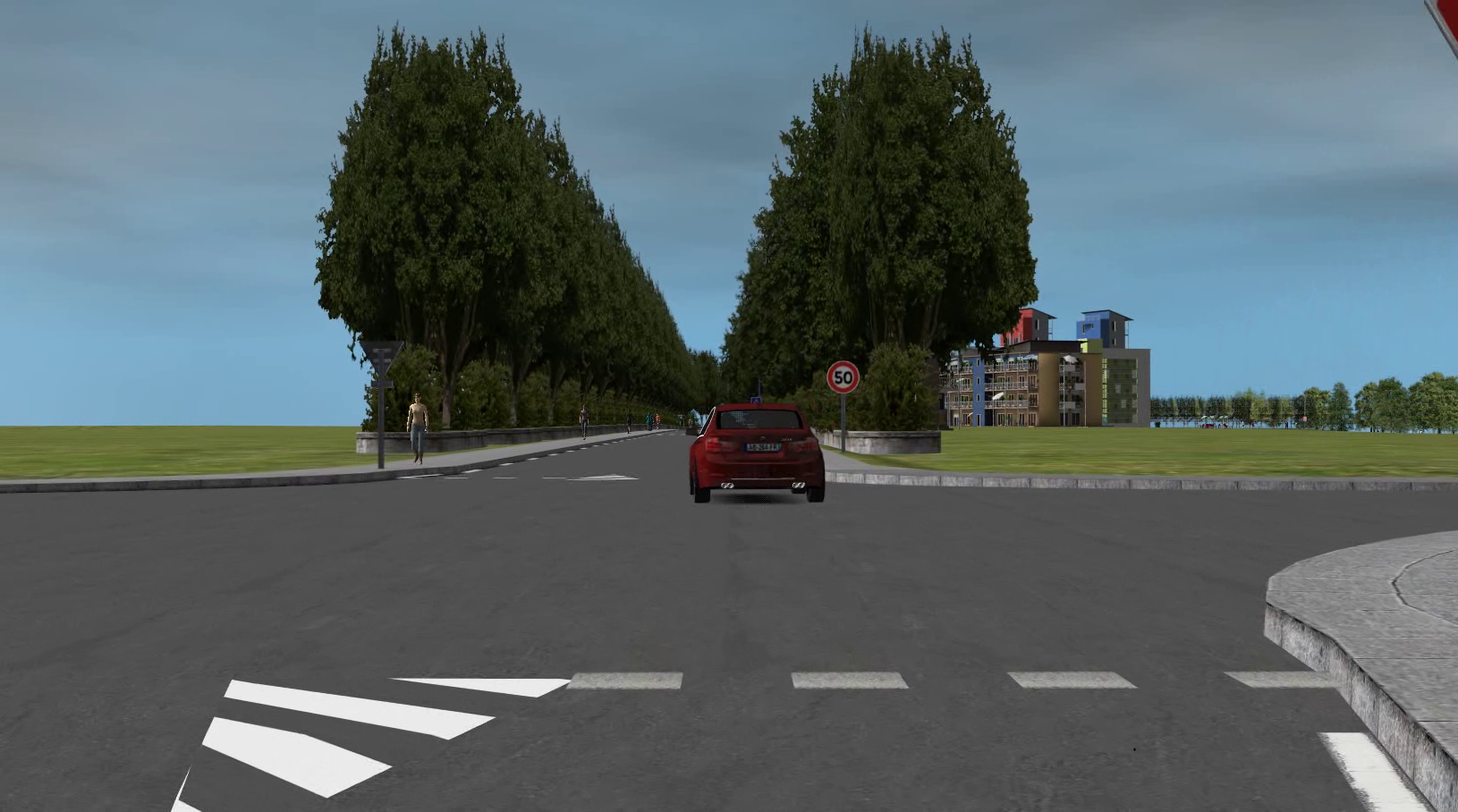
Simulator to assess driving ability of traffic accident victims
Researchers from SDU will develop a method to help doctors assess when accident victims can get back behind the wheel.
Since 2011, Jens Lauritsen and Morten Hansen from the Department of Clinical Research and the Mærsk Mc-Kinney Møller Institute at the University of Southern Denmark (SDU) have been collaborating on the car simulator, a setup with computer screens, steering wheel and pedals.
Since then, the simulator has been further developed, expanded and used by students at the Faculty of Engineering for various projects, while the researchers have been working on defining a research project where the simulator can be used effectively. With a grant from The Danish Victims Fund, the simulator's function will now be documented in research. The Danish Victims Fund supports research for victims of traffic accidents and violence, and just the guidance of patients who have suffered from traffic accidents is at the heart of the project.
-Most people know someone who has been involved in a traffic accident. A lot of people come to the hospital after traffic accidents and fortunately most recover. There are good plans for prevention, treatment and rehabilitation, but no guidelines for when one is healthy and strong enough to get back into traffic as a car driver, says Jens Lauritsen, Professor of Accident Research and Prevention.
Since then, the simulator has been further developed, expanded and used by students at the Faculty of Engineering for various projects, while the researchers have been working on defining a research project where the simulator can be used effectively. With a grant from The Danish Victims Fund, the simulator's function will now be documented in research. The Danish Victims Fund supports research for victims of traffic accidents and violence, and just the guidance of patients who have suffered from traffic accidents is at the heart of the project.
When is one strong enough to drive again?
The researchers from the Department of Clinical Research and the Mærsk Mc-Kinney Møller Institute will test if the simulator can help determine when victims of traffic accidents are ready to drive again.-Most people know someone who has been involved in a traffic accident. A lot of people come to the hospital after traffic accidents and fortunately most recover. There are good plans for prevention, treatment and rehabilitation, but no guidelines for when one is healthy and strong enough to get back into traffic as a car driver, says Jens Lauritsen, Professor of Accident Research and Prevention.

Need for individual advice
There are only a few scientific studies in the field. And those that exist, show according to Jens Lauritsen, that it is very individual how quickly people recover from, for example, a broken leg.-When does one have enough strength in the foot to press the brake down? There is a big difference between when the first with a specific lesion can and when the last one can. We often calculate on average, but that doesn't work if there is a 12-week difference between the first and the last, and the average is used to give the green light without further examination.
The ambition is to be able to provide rational individual advice to each patient. The perspective is that the simulator can be part of both rehabilitation and evaluation of the patients.
Measuring 1000 parameters
Jens Lauritsen is Professor of Accident Research and Prevention at the Clinical Institute and Chief Physician and Head of the Accident Analysis Group at Odense University Hospital.Together with Morten Hansen, Associate Professor at the Mærsk McKinney Møller Institute, he has over the years worked to realize the wish to use the car simulator to help patients.
-The simulator can collect more than 1000 parameters, including the pressure on the pedals, facial expressions, sweat on the skin, EKG and much more, explains Morten Hansen.
-Our original idea was to find out which parameters are important for driving safety. And how can we measure it?

Technology with many possibilities
The two researchers have many suggestions on how the technology will be beneficial in the future, once the significant work of finding the right way to measure road safety is done. Initially, for the victims of traffic accidents.The car simulator was originally built with the intention of possibly using it to evaluate whether elderly drivers could extend their driving license. Although the project was never realized, Jens Lauritsen thinks it could be revisited.
-The simulator could also be used for patients with diabetes who receive medication that might affect their driving safety. The possibilities are many.
Jens Lauritsen, the head of the Accident Analysis Group, has data going back to 1980 on when people drive incorrectly, how they drive incorrectly, and how much they are injured.
These data will be used by researchers when they have to decide which scenarios to include in the simulation.
-With a detailed statistical overview of where people drive incorrectly, we can base the simulation on actual accidents and create as realistic simulations as possible, says Jens Lauritsen.

Cross-faculty collaboration
The collaboration between the Faculty of Health Sciences and the Faculty of Engineering provides the opportunity to develop some technical solutions that can be used on patients immediately.Jens Lauritsen and Morten Hansen are not alone in their efforts. In the upcoming research project, they have teamed up with Bjarke Wiberg, professor of orthopedic surgery and expert in rehabilitation after fractures, Daniel Teichmann, lecturer at Mærsk McKinney Møller Institute and expert in sensor technology, particularly in car driving.
-We are also working with driving instructor Michael Lønbæk, who is the chairman of the Association of Driving Techniques in Denmark. A concrete testing of the simulator at the Vejle driving technique facility has been agreed upon, where there was also a pilot project earlier. A follow-up group will be established nationwide to ensure relevant background information on both driving ability education and legislation. This will give us input into the role that simulators can have, says Jens Lauritsen.
Facts
The grant from the Disaster Fund is DKK 2.5 million.
The researchers expect to include patients in the project in 2023.
The researchers expect to include patients in the project in 2023.
Meet the researcher
Jens Lauritsen is a professor of accident research and prevention at the Clinical Institute and chief physician as well as daily manager of the Accident Analysis Group at Odense University Hospital.
Meet the researcher
Morten Hansen is associate professor at the Mærsk McKinney Møller Institute, Faculty of Engineering.